Animal Families
Photography by Suzi Eszterhas
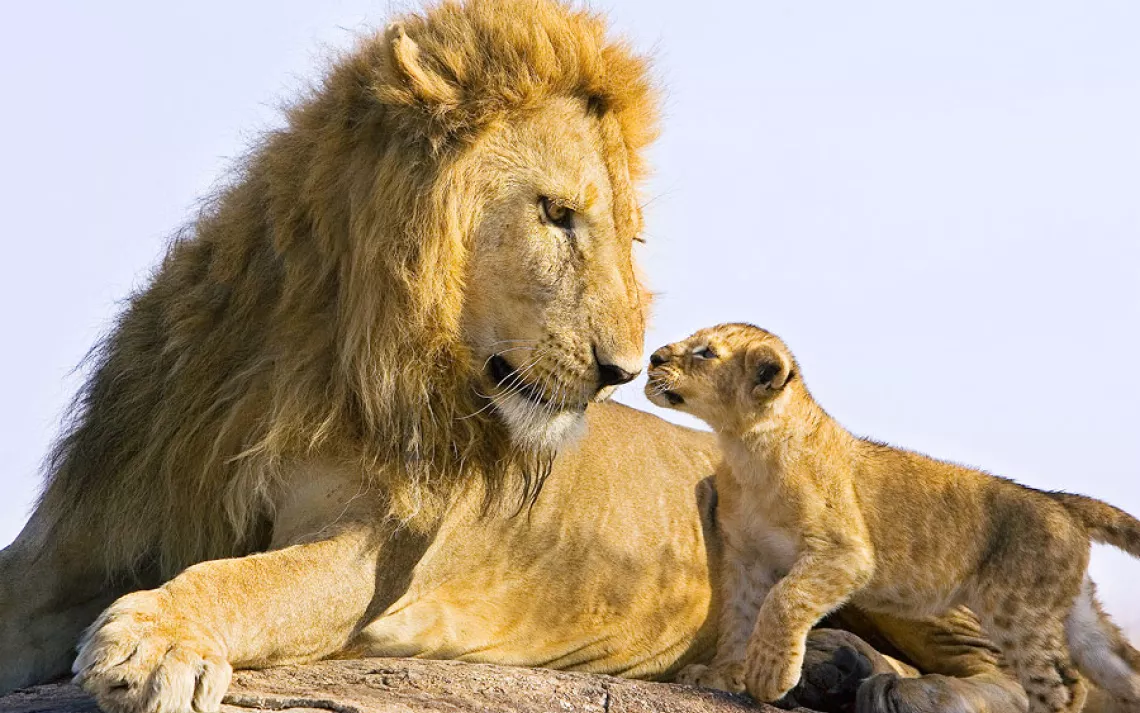
They're the creatures we love to love. Big, furry, and expressive, we turn lions, gorillas, cheetahs, and bears into sports mascots, cartoon characters, and children's toys. We identify with their apparent strength or perceived tenderness and imagine that their struggles might somehow mirror our own. But how well do we really know these beloved animals?
Photographer Suzi Eszterhas spends months in the field with her wild subjects to capture moments like the one above—of a two-week-old lion cub at Masai Mara National Reserve in Kenya meeting its father for the first time—and she comes back armed not just with great photographs but also with firsthand knowledge of the animals' family relationships and the dangers they face. Eszterhas's series "Eye on the Wild" (Frances Lincoln Publishers) introduces endangered species to young children, a project she hopes will inspire a new generation of environmentalists.
We collected some of our favorite shots from Eszterhas's portfolio and asked the photographer to share some of her tales from the field.
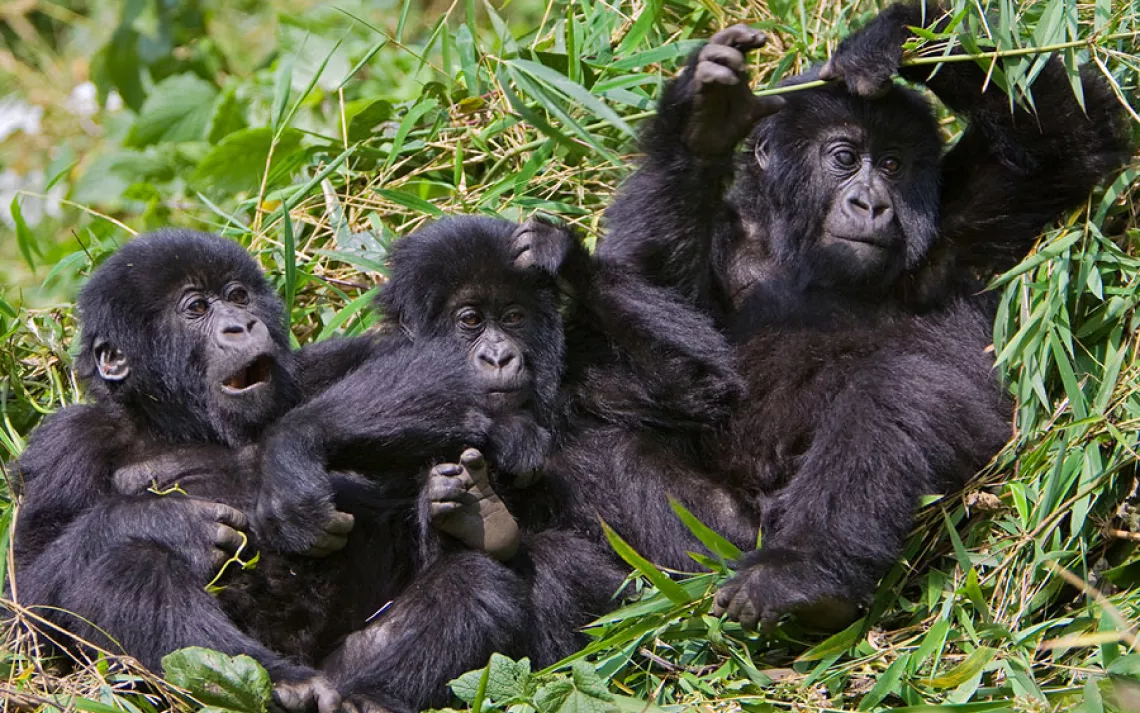
"Gorillas have these big, close-knit families, and they're always interacting," Eszterhas says. "It's one of the things that makes them so exciting to photograph." The three young mountain gorillas pictured above are playmates from different mothers who will likely grow up together. Their small swath of home in the Virunga Mountains in East Africa is a fragile oasis. "You're talking about 700 mountain gorillas in the whole world, in this tiny habitat that's surrounded by human conflict, poverty, and overpopulation."
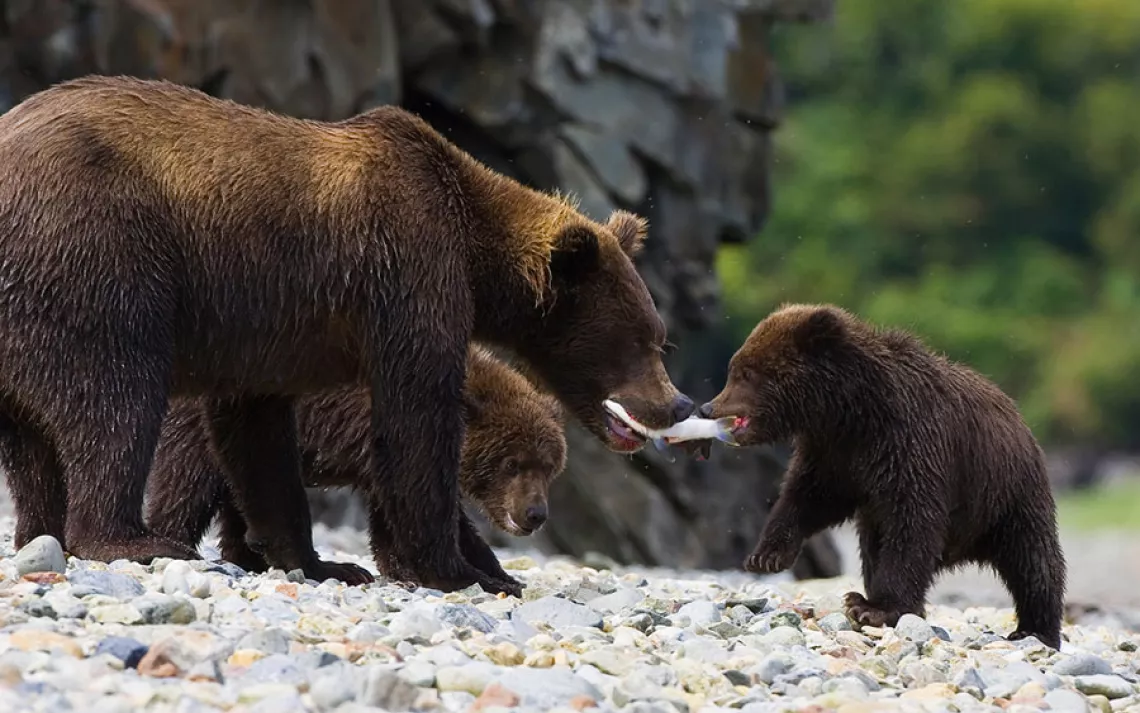
A young coastal brown playfully tugs a fish from its mother's mouth in Alaska's Katmai National Park. In autumn the bears eat mostly salmon, along with other treats like clams, and may gain as many as 30 pounds in a day. "The fat in that salmon is going to be what keeps that baby alive through the winter when they hibernate," Eszterhas says. "They're just gorging on salmon at that point in the year."
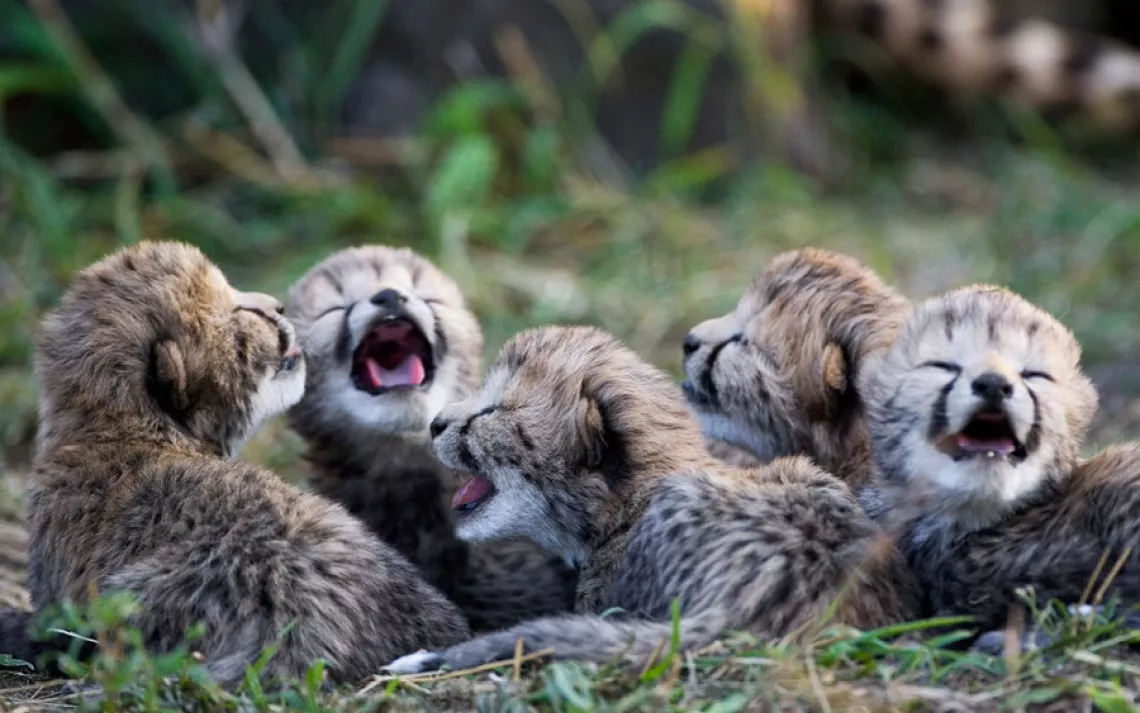
Young cheetah cubs appear almost like chicks before they've opened their eyes. "A cheetah's den is called a 'nest,' and they do literally chirp like birds," Eszterhas says. Cheetahs typically have three to six cubs per litter, but their mortality rate is alarmingly high. Although adult cheetahs can outrun any other land animal on the planet, the cubs aren't as fast, and they face predation from jackals, birds of prey, hyenas, leopards, and lions, among other animals.
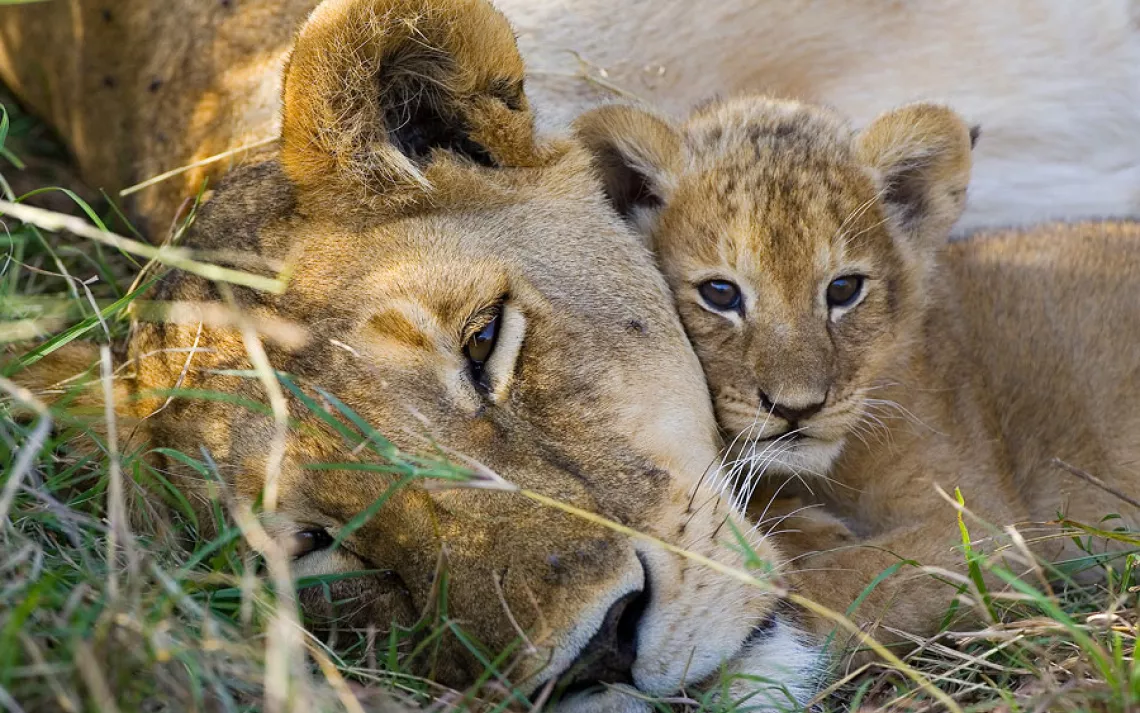
For the first two months of its life, a cub stays with its mother in a den, which can range from a rock crevasse to a grassy area. We can partly thank the lion's instinctual nature for cute photos like this one. Says Eszterhas: "If you watch tigers or sometimes even cheetahs, as the cubs get a little older, they get less snuggly because they're solitary cats. But with lions, they just stay snuggly forever because they're pride animals and that physical contact is really important for reinforcing the pride bond." Once it's old enough, the cub will be introduced to the pride (as in the first slide). If the male lion is the biological father, he'll welcome the cub—as was the case with this cub. If not, the cub most likely won't live for long.
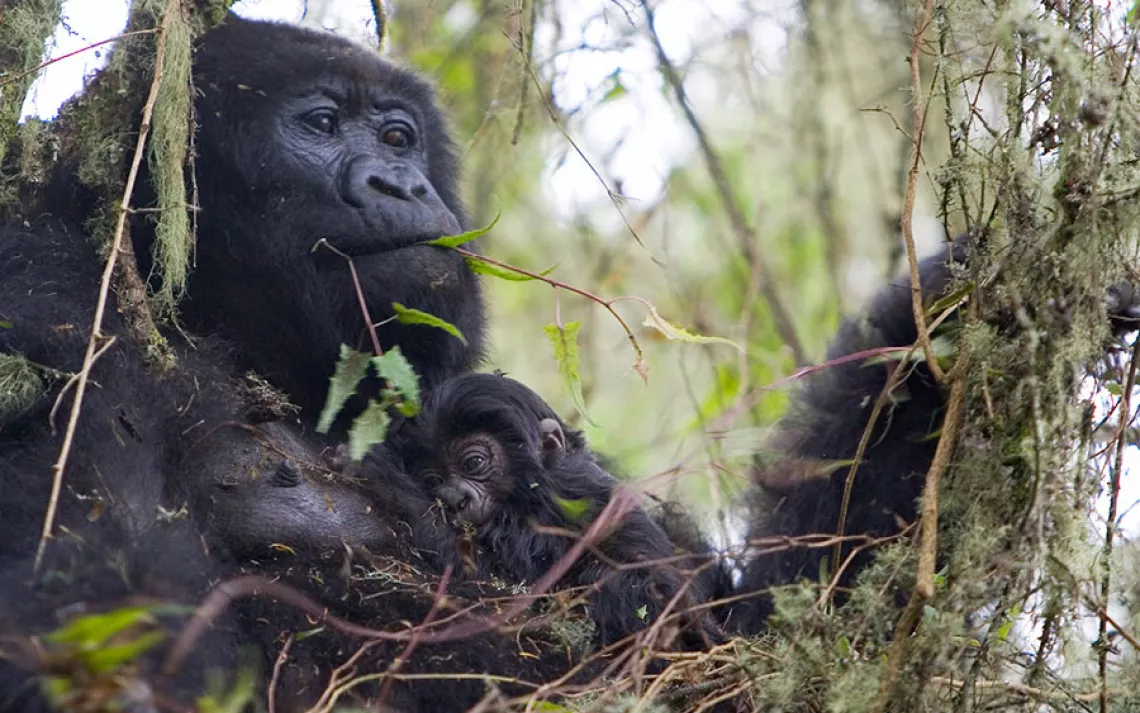
Does this gorilla mother look relaxed? This shot is remarkable because mothers normally carry infants in the crook of their arm—a spot that protects the baby but makes it difficult to get a clear photograph of that tiny little face. Perhaps enjoying some sort of simian version of the "food coma," this mother has become so comfortable while eating that she's dropped her arm enough to allow Eszterhas to snap an intimate family portrait. "That baby's less than a week old," she says. "It's very difficult to photograph a newborn gorilla with their eyes open, because they're sleeping a lot. So that was a great moment where the baby was awake, and Mom is feeding and relaxed, and all the elements came together. Being at the right place at the right time is a huge part of this job."
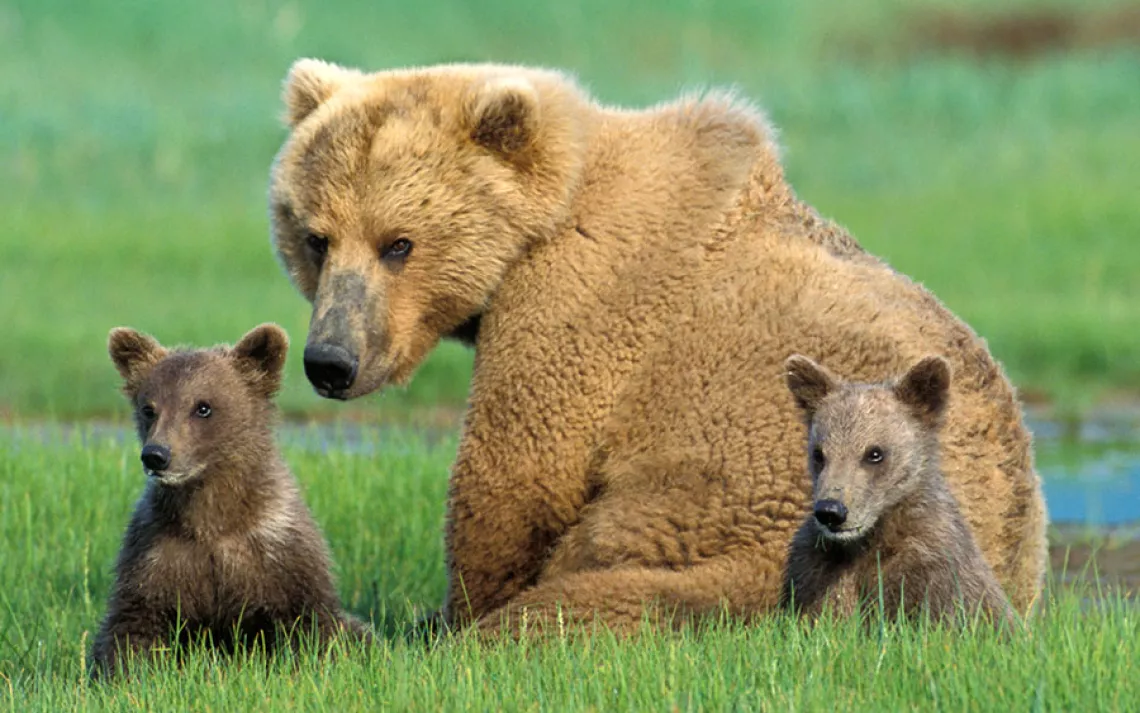
This family of coastal brown bears has recently emerged from hibernation. In the spring, bears graze for hours. "This sedge grass is the first thing they eat. It's really nutritious and some studies suggest that the grass helps to gently get their digestive system going again after being in hibernation," Eszterhas says. As members of the second largest bear species in the world, the two cubs pictured here could eventually stand 10 feet tall and weigh 1,000 pounds.
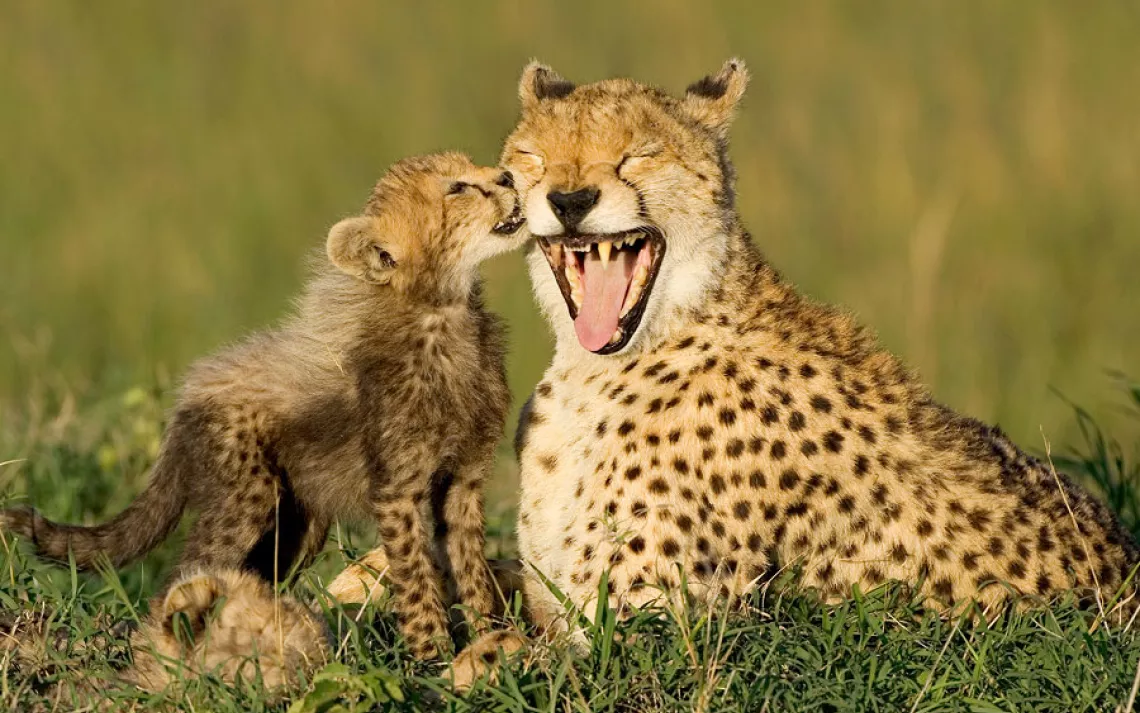
A cheetah cub licks its mother in Kenya's Masai Mara National Reserve. Adapted to life on the African plains, adults can go without water for three or four days. Perhaps an inspiration for football players, the black lines on a cheetah's face protect its eyes from the sun. Eszterhas hopes that her photos of endangered animals will create wildlife activists: "That's part of why I really like doing children's publications. It's a way of bringing home the amazing parts of these animals in a cute and fuzzy way that children can really get excited about and trying to spark some more interest from our future generations in terms of protecting these species, because it is going to be up to them."
To learn more, read our full interview with Suzi Eszterhas.
By Della Watson
Della Watson is Sierra's web editor.
More articles by this author The Magazine of The Sierra Club
The Magazine of The Sierra Club


